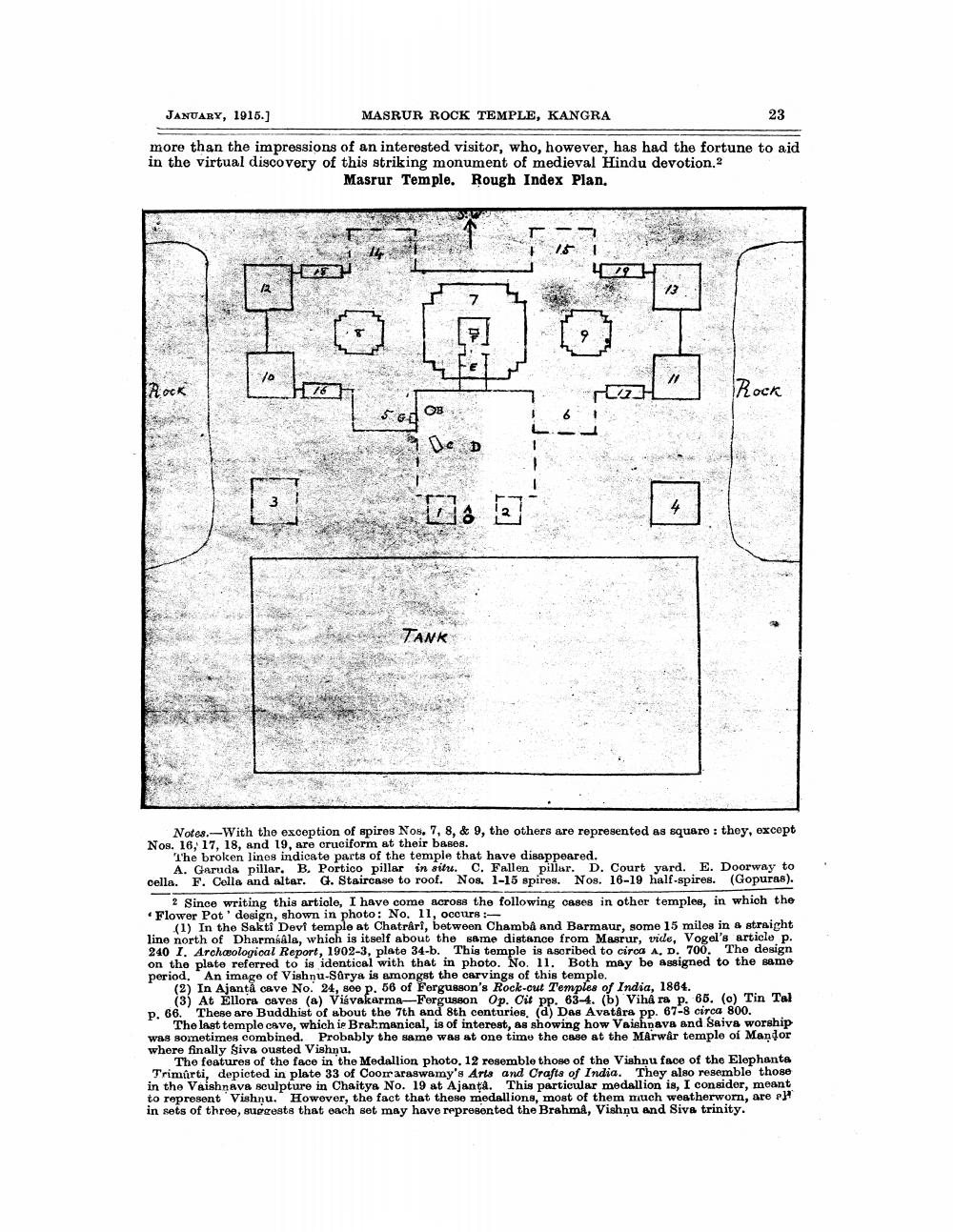________________
JANUARY, 1915.]
MASRUR ROCK TEMPLE, KANGRA
23
more than the impressions of an interested visitor, who, however, has had the fortune to aid in the virtual discovery of this striking monument of medieval Hindu devotion.2
Masrur Temple. Rough Index Plan.
Rock
6
!
TANK
Notes.-With the exception of spires Nos, 7, 8, & 9, the others are represented as square : they, except Nos. 16, 17, 18, and 19, are cruciform at their bases.
The broken lines indicate parts of the temple that have disappeared.
A. Garuda pillar. B. Portico pillar in sitre. C. Fallen pillar. D. Court yard. E. Doorway to cella. F. Colla and altar. G. Staircase to roof. Nos. 1-15 spires. Nos. 16-19 half-spires. (Gopuras).
2 Since writing this article, I have come across the following cases in other temples, in which the Flower Pot' design, shown in photo: No. 11, occurs :
(1) In the Sakti Devf temple at Chatråri, between Chamba and Barmaur, some 15 miles in a straight line north of Dharmala, which is itself about the same distance from Masrur, vide, Vogel's article p. 240 I. Archaological Report, 1902-3, plate 34-b. This temple is Ascribed to circa A. D. 700. The design on the plate referred to is identical with that in photo. No. 11. Both may be assigned to the same period. An image of Vishnu-Surya is amongst the carvings of this temple.
(2) In Ajantà cave No. 24, see p. 56 of Fergusson's Rock-cut Temples of India, 1864.
(3) At Ellora caves (a) Visvakarma-Fergusson Op. cit pp. 63-4. (b) Vihå ra p. 65. (o) Tin Tal P. 66. These are Buddhist of about the 7th and 8th centuries, (d) Das Avatara pp. 67-8 circa 800.
The last temple cave, which ie Brahmanical, is of interest, as showing how Vaishnava and Saive worship was sometimes combined. Probably the same was at one time the case at the MArwar temple of Manor where finally give ousted Vishnu.
The features of the face in the Medallion photo. 12 resemble those of the Vishnu face of the Elephanta Trimurti, depicted in plato 33 of Coorraraswamy's Arts and Crafts of India. They also resemble those in the Vaishnava sculpture in Chaitya No. 19 at Ajanta. This particular medallion is, I consider, meant to represent Vishnu. However, the fact that these medallions, most of them much weatherworn, are } in sets of three, sursesta that each set may have represented the Brahma, Vishnu and Siva trinity.




